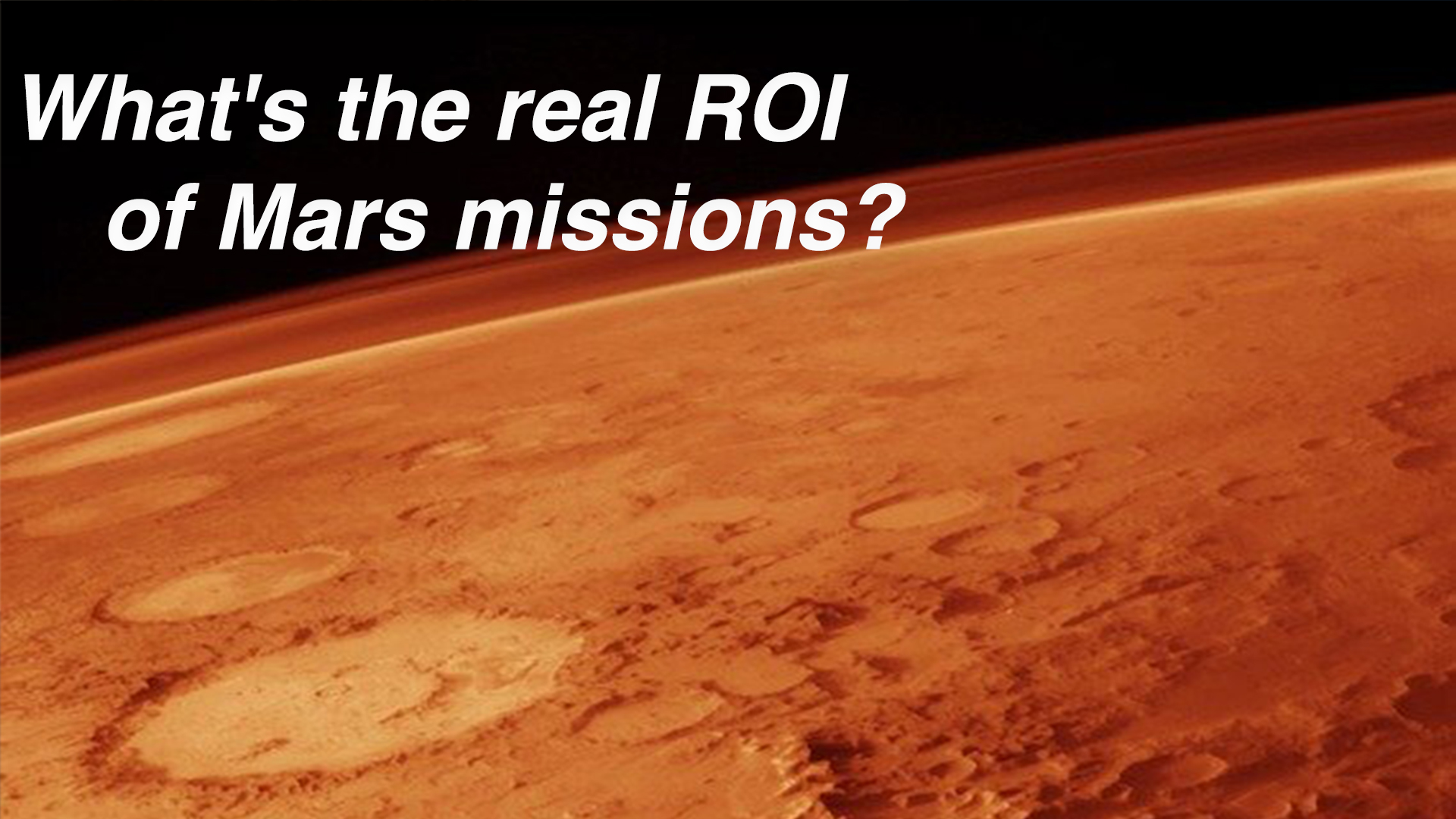Later today, NASA will launch its Perseverance rover, the newest, and most advanced in a series of rovers sent to Mars over the last 45 years.
While it probably feels like the world has far more important things to worry about at the moment with the pandemic, the fact is Perseverance is hugely important – now more than ever.
Its primary mission is to look for evidence that the planet once supported life – in the form of ancient, extinct microbes that may exist in the Jezero Crater – the site of a long-gone Martian lake dating back over 3.5 billion years.
Perseverance will also test experimental tech that’s meant for future manned missions to Mars, including an amazing 1.8kg, 350 watt-powered, solar-powered UAV named Ingenuity, which will scout the rover’s route, and ascertain future landing sites for subsequent Mars missions.
Living up to its name, Ingenuity is humanity’s first extraterrestrial aircraft. It’s self-charging and able to fly for up to 90 seconds at a time, over a distance of 300 metres, all autonomously without direct human control. On Earth that may not sound impressive, but it’s a huge technical achievement given Mars’ atmosphere is 99% thinner than Earth’s. Making Ingenuity arguably one of the most efficient flying machines ever conceived. Not even taking into account it’s then shipped off-world and will perform those amazing feats on a harsh alien planet.
Just to reach the red planet is a journey of over 104,000,000km, that has to be carefully timed during an optimal window that only opens once every 26 months when Earth’s and Mars’s orbits are at their closest, cutting the journey from 9 months to 7 months. When Perseverance does reach Mars on 18 February, 2021 after 218 days in space, it will need to endure temperatures of over 2,100ºC as it enters the Martian atmosphere, and its highly sensitive equipment will need to survive a harrowing landing as it decelerates from 2,000km/h, to land safely on the planet’s surface.
Why Mars is so difficult
Of the 18 lander or rover missions ever attempted to Mars, 8 have failed. The biggest reason being, unlike a relatively easy landing in the Moon’s infinitesimally thin atmosphere, Mars’ heavier atmosphere generates huge amounts of heat as landers come in. But its atmosphere is also too thin for a parachute to work effectively. Meaning any landing requires a complicated sequence of firing retrorockets to keep from crashing. All of which must be done autonomously as a landing takes just 7 minutes, but signals from Earth can take up to 22 minutes to reach Mars.
Understandably, simply getting to Mars costs huge sums. For instance, the proposed Mars One project is set to cost from US$4-6 billion. Which admittedly in the era of trillion dollar bailouts, doesn’t seem that much, but by comparison some NGOs put the cost of ending global hunger at as little as US$7 billion per year (through very targetted nutritional interventions) or roughly 1-2 Mars missions per year. Meanwhile humans have launched 3 Mars missions this month alone.
Is Mars in 2020 actually a bargain?
Yes, Mars is expensive. But then anything that’s big and ambitious almost always is. By comparison, the US’s first moon landing in 1969 cost roughly US$152 billion in today’s money. And we haven’t even been back there since 1972. But that’s almost not the point since frankly, it’s impossible to imagine life as we know it without all the discoveries that followed as a direct result of the space race, from critical tech like GPS and our entire satellite telecommunications network, to more ancillary inventions like artificial limbs, insulin pumps, scratch-proof lenses and velcro.
Hence we can make the argument that whatever we’re spending today on a Mars mission is more of a follow-on investment to what’s already proven to be one of the best investments in human history. Simply put, compared to reaching the Moon in 1969, a Mars mission today is a downright bargain.
Weighing a grand total of 1,025kg, Perseverance’s payload is the heaviest ever deployed to Mars. At an estimated mission cost of US$4 billion, that works out to US$3,900,000 per kilo – roughly 66x the price of the equivalent amount of gold. Making Perseverance the most valuable tonne of hardware in our entire solar system. Maybe even the known universe if we are actually alone out there – and that gets to the heart of why Perseverance really matters, even during a pandemic.
While there’s plenty to worry about right now on Earth the fact remains that space is our future in one form or another, and Perseverance could take us forward in huge ways.
Firstly, Perseverance may actually discover signs of extraterrestrial life beyond Earth. Actual. Alien. Life. In the form of ancient Martian microbes. Proof we’re not alone, or at least, we weren’t 3.5 billion years ago. The implications of which, if true would change everything.
Secondly, it will mark the first flight by a human-made (note the adjective), object on another planet. Another astounding feat, albeit for a very different reason. It’s easy to forget it was only 116 years ago that the Wright Brothers made their first historic flight in a motorised glider made out of cloth and wood.
To put it in perspective, 116 years is less than the span of one, very long human lifetime. For instance, take 117-year old Kane Tanaka (the world’s oldest living woman). Within her single lifetime, we’ve not just learned to fly. We’ll have traveled 104 million miles through outer space, and flown an autonomous robotic helicopter on another planet.
All within just that one person’s lifetime. If it feels like humanity (in general) is chasing its tail at the moment, take heart in the fact that progress does happen. Often too slow to immediately notice, but faster than we may realise.
Perseverance isn’t even alone. Mars has seen something of a travel boom of late, with both China and the UAE launching their own Mars missions earlier this month. And that’s on top of 6 other spacecraft already exploring Mars at the moment, including American, European, and Indian missions.
China’s aptly named Tianwen or “Heavenly Questions” will explore the area around Utopia Planitia – a giant Martian crater – in search of subsurface ice which is believed to exist, and could in turn provide drinkable water for future manned missions. Another discovery, which simply put would be a game-changer in space exploration.
While the UAE’s Al-Amal or “Hope” orbiter will give us a more complete picture of the Martian atmosphere from daily weather to the planet’s seasonal cycles. All of which will be critical to future manned missions if we have any hope of succeeding on a harsh alien world.
Mars may be exactly what we need right now
In many ways, 2020 is one of the toughest years most of us have ever seen, save perhaps the most venerable centenarians among us like Tanaka san. Economic dislocation. Global pandemic. Closing borders. Rising nationalism. The war on facts.
Yet just this month, we’ve also seen Ingenuity, Perseverance, Heavenly Questions, and Hope all take flight.
Many skeptics rightly argue that we should be trying to save our own world, first and foremost. And they are 100% correct. But space exploration is not a zero-sum game. Any money we spend exploring space is almost guaranteed to yield huge results in ways we can’t even envision yet. The only catch – and this is a big one – is we need to keep from killing our own planet long enough to reap the rewards of exploring another planet.
Mars certainly won’t solve our problems here on Earth, but it does remind us of just how far we’ve come. And what we’re capable of.
Will we ever colonise Mars? What will it mean if we find alien life beyond our world? Will we make new, Earth-saving discoveries in the process? The short answer to all these epoch-making questions is (conveniently) the same – we never will if we don’t try. And to be frank, looking back on the last 30 days, July has already been quite trying, so honestly what’s a little more? A little ingenuity, hope, perseverance and heavenly questions may just be exactly what we need at the moment.









